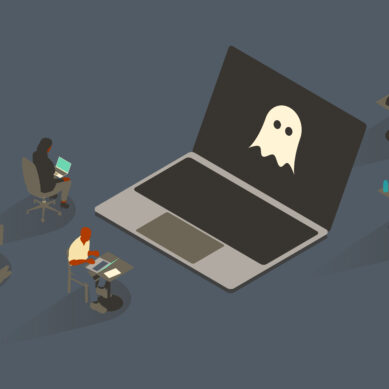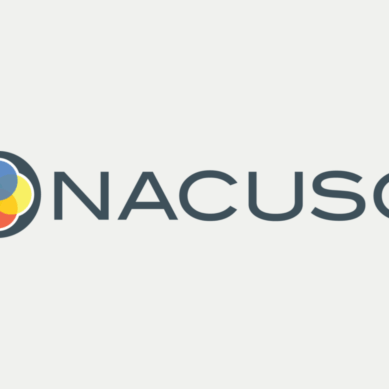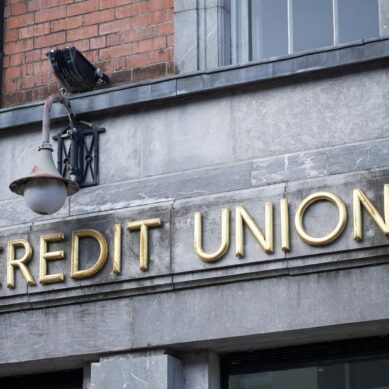In 1728, Scottish Merchant William Hogg faced a unique problem. As a merchant of good standing, Hogg always ensured his suppliers were paid on time. However, all too often, his bills were due before he himself had been paid, leaving him in quite a difficult situation. Without having received proper payment, through no fault of his own, Hogg was left without enough funds in his accounts to cover his debts.
The Royal Bank of Scotland, seeing the bind Hogg was in, and knowing he was consistent in paying his bills, worked with the merchant to find a solution.
The answer? The creation of the overdraft.
At any time, Hogg would be permitted to withdraw more funds than were currently in his account, allowing him to pay his suppliers on time—for a small fee to the bank, of course. This new method worked for both parties as Hogg no longer had to fret over his account’s standing while he waited to be paid, and the bank—who knew Hogg would eventually have the money—could profit from the transaction. It was a win-win scenario.
And thus, the Royal Bank of Scotland created the world’s first overdraft facility.
Differences of opinion
Nearly three hundred years later, overdraft operates a tad differently but serves the same basic purpose: allowing those without the proper funds in their account to still conduct transactions and make payments. However, the controversy surrounding it has never been higher.
While the White House and the Consumer Financial Protection Bureau (CFPB) have labeled overdraft fees—the same fees Hogg once paid to the Royal Bank of Scotland—as “junk fees,” serving little purpose other than to add unnecessary financial burden to consumers, credit unions and banks view overdraft as a convenience and protection for their members, with the fee as a simple operating cost.
And consumers? Well, they are in a never-ending love/hate relationship with the practice.
So what’s the truth? Is overdraft protection and the fees that come along with it a life vest, saving members from drowning financially? Or is it only weighing them down more? With calls to rid the world of overdraft, calls to keep it, and calls to reform it, what’s the best way forward for all? Is there a solution that will satisfy financial institutions, the CFPB, and consumers alike?
To answer that question, we must examine where each group stands on overdraft and what their arguments for or against it are.
Credit unions: The price of protection
First, let’s look at the financial institutions, such as credit unions, that offer overdraft and therefore collect these fees. These institutions argue that overdraft is ultimately a protection for their members that works for and benefits them.
Without overdraft protection, many members struggling financially may be unable to pay bills which can have dire consequences. However, thanks to overdraft, credit unions can approve the transaction, even if the member lacks the funds to complete it, allowing the rent to be paid, the water to stay on, and food to be put on the table.
That protection, credit unions argue, is certainly worth the $20-$30 fee the member incurs for doing so. Additionally, as not-for-profit institutions, the money collected is often directly returned to the community or used to support the credit union’s operations, which in turn supports members and the community.
Even if a member does incur a fee, credit unions are often forgiving of overdraft fees and will happily waive them in certain scenarios. After all, the goal of the credit union is to support the member, not add to their financial burden. Additionally, as part of the Dodd-Frank Act, the NCUA added a list of requirements for overdraft back in 2010, requiring all credit unions to provide information on overdrafts to their members as well as necessitating consumers to opt into the program and have the ability to opt out.
The list of added rules was as follows:
- “Consumer Opt-In – As highlighted above, this provision requires that consumers opt-in, or affirmatively consent, to the institution’s overdraft service for ATM and one-time debit card transactions, before overdraft fees may be assessed on an account.
- Opt-in/Out Notice – Prior to opting in, a consumer must be provided a notice explaining the financial institution’s overdraft services. This should include the fees associated with the service and the consumer’s choices. If institutions do not use the Fed’s sample notice, Regulation E includes language that the notice should substantially follow.
- Consumers Covered – The opt-in right applies to all consumers, including new and existing account holders.
- Revocation Option – Consumers also have an ongoing right to revoke consent after they opt-in.
- Same Account Terms, Conditions, and Features – Institutions must provide consumers who do not opt-in with the same account terms, conditions, and features — including prices — as consumers who do opt-in.
- Prohibition from Charging Overdraft Fees for Overdrafts Paid – Institutions are prohibited from charging overdraft fees for any overdrafts they pay on ATM and one-time debit card transactions for consumers who do not opt-in.”
Considering the NCUA’s clearly outlined rules, as well as credit unions’ history of leniency and forgiveness of the fee, on top of the benefits that overdraft protection provides, it’s not hard to see why credit unions are quick to rally around it and come to its defense. Others, however, do not feel the same.
The CFPB: Unnecessary and predatory
We’ve covered the reasons overdraft was created and the intended benefits, so let’s take a look at the opposition, who are staunchly against the practice of overdraft fee collection (though not necessarily against overdraft itself).
The CFPB as well as the Biden Administration argue that overdraft fees are unnecessary and predatory; junk fees, essentially, working to take money out of the hands of hardworking Americans and line institution’s pockets. They also argue that since they impact those with the lowest financial stability and those living paycheck to paycheck, they harm the most economically vulnerable groups and prey on their disadvantaged situations. Can’t pay their rent? Charge them more. Can’t get gas? Add to the bill.
And credit unions have added to the bill quite significantly, reports show. According to the Quarterly Credit Union Data Summary published by the National Credit Union Administration (NCUA), the 443 credit unions with over $1 billion in assets collected over $915 million in overdraft fees during the first three months of 2024 alone (a statistic America’s Credit Unions asked the NCUA to leave unpublished, for fear of the reputational risks that would come with the public release of the number.)
Not only will these households then have to cover the rent still, but they have the added stress of covering the fee, which of course can be continuously added for each transaction thereafter. One credit union I belong to, for example, charges $30 per overdraft. Meaning, that if a member’s rent payment automatically comes out of their account and (knowingly or unknowingly) puts them in the negative, and then they buy lunch, put gas in the car, and pick up a prescription, they’re looking at $120 extra in fees alone.
For a family living paycheck to paycheck, that $120 fee can make or break them. A CFPB report found that “Households frequently incurring overdraft and NSF fees are more likely to struggle to meet their financial obligations: Among households that frequently incurred overdraft/NSF fees, 81% reported difficulty paying a bill at least once in the past year. This drops to 25% for households that were not charged a fee.”
This statistic supports the CFPB’s argument that overdraft fees adversely affect members struggling financially over those who are not. But is it better than the alternative of being unable to complete transactions such as a rent payment? Let’s ask the consumers using overdraft.
Consumers: Needed, but painful and often unused
While both sides have made good points for and against overdraft fees, ultimately, the final say should lie with those paying the fees and utilizing overdraft protection, should it not? There’s a common saying that goes “Something is only worth what someone out there is willing to pay.” The CFPB may find overdraft fees to be excessive, and credit unions may find them necessary, but are consumers willing to pay them?
In short, yes. But with a few complaints.
According to a survey from ABA, 67% of consumers are in favor of overdraft protection. “More than two-thirds of consumers (67%) find their bank’s overdraft protection valuable—as compared with only 16% who do not find it valuable—and 8 in 10 consumers (79%) who have paid an overdraft fee in the past year were glad their bank covered their overdraft payment, rather than returning or declining payment.”
However, in a series of interviews and focus groups conducted by the CFPB, it was noted that while consumers were grateful for the times overdraft protected their transactions, they were often frustrated and confused about the system around overdraft protection and overdraft fees.
For one, they felt the amount of the fees (ranging from $20-$35 dollars) were excessive and not in line with the amount the transaction covered. In fact, with an average overdraft amount of $26 usually paid back within three days and a median overdraft fee of $35, the CFPB has found that overdraft protection has an APR of about 16,000 percent. This is hugely disproportional to other fees and interest rates.
Consumers were also frustrated with a lack of communication and timely account balance updates, claiming they often did not receive notice of their low balance or that they had incurred a fee. Additionally, they expressed confusion about the program and which accounts were attached to it, saying that they did not feel like the opt-in and opt-out options laid out by the NCUA were clearly addressed by the credit union when opening their accounts. In fact, many were under the impression overdraft protection was a requirement they had no say in.
Essentially, they appreciate the overdraft protection credit unions provide and its necessity, but also agree with the CFPB’s belief that financial institutions are going too far with the fees and may be taking advantage of members’ poor financial situations.
What’s the solution?
As a result of these differences in opinion on overdraft fees, an all-out fee war has seemingly begun with CFPB and the White House facing off against credit unions, other financial institutions, and advocacy groups, with the former attempting to do away with the fees entirely and the latter, in return, attempting to do away with the CFPB entirely.
But there’s a reason overdraft has been around as long as it has. It’s a critical and much-needed tool for consumers. While our technology has developed and our way of banking has changed, some things still remain. One such thing, going all the way back to our old friend William Hogg, is the need for lines of credit, either in the form of credit cards or overdraft.
At the same time, there’s also a reason that these three parties have not been able to come to an agreement on what the proposed outcome should be. Consumers need to pay their bills even if they lack the means to do so, credit unions want to support members in paying those bills but at the same time are reliant (perhaps overly so) on the fee income they receive from overdrafts, and the CFPB wants to protect consumers from being bogged down by fees, but risks harming credit unions and, in turn, overdraft as a whole by doing so.
At first glance, it may appear that each group has a different motive when it comes to overdraft protection, but in reality, they are all working towards the same goal: protecting consumers’ financial interests.
Meeting in the middle
But who compromises and where? Credit unions have already begun taking steps toward change. Many are offering 24-hour grace periods, meaning if the member can add funds to their account before that mark, they won’t incur a fee. Additionally, members won’t be charged if the transaction is under $20. However, that is not representative of credit unions as a whole and doesn’t address two pressing issues: the disproportionately high fees and credit unions’ overdependence on them.
But the industry is aware that this needs to change. The Filene Research Institute report from 2022 on overdraft protection notes, “Many financial institutions have developed a strong dependence on ODP to sustain their non-interest income. This report makes the reader pause and think that maybe we have relied on this source of income for long enough. Maybe we should develop better products to address margin compression and consumer needs.”
That same report examines alternatives to overdraft fees or reforms to existing programs, as well as investigating other sources of income for credit unions. And while there may never come a day when overdraft fees are done away with entirely, it’s important for credit unions to consider how reliant they are on those fees and what they may need to change in the event that the CFPB is successful in setting a cap on the amount that can be charged. Credit unions can read the full report to learn more.
But compromise cannot just come from one party. It is imperative that the CFPB recognize the importance of overdraft protection and realize that a one-size-fits-all approach to regulation—for both banks and credit unions—is not often an effective solution. While the CFPB’s proposed regulations have merit, they should not be applied without consideration for the impact it may have on overdraft as a whole.
Be prepared for reform
Overdraft reform—in whatever shape and solution it eventually takes—is likely to come at one point or another. The best thing credit unions can do to be prepared and support their members is to take the opportunity to reexamine their fee structure and what portion of their income is reliant on it. What other income avenues might there be, should the CFPB restrict overdraft and NSF fees? Is your credit union currently offering grace periods and low-transaction cost forgiveness to members on overdraft fees? These are things to consider as the issue progresses.
Unfortunately, there may not be a solution to the debate that perfectly satisfies all parties involved; each may need to be prepared to give a little for the sake of reaching an agreement, remembering that at the end of the day, the main concern is how we can best help members become financially healthy and stay afloat. Credit unions should act as a life preserver to their members, not an additional burden weighing them down.






















































